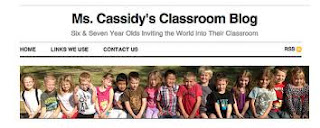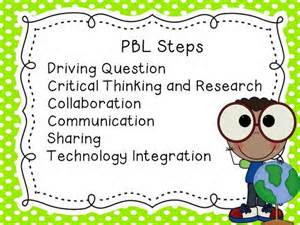What can we learn from Mrs. Cassidy?
To answer that question, we can learn how to effectively use technology in the classroom.
Using technology correctly makes it an effective learning tool for teachers and students. In the video, Little Kids...Big Potential, Mrs. Cassidy has recorded her first grade class explaining all the technology tools they use in the classroom and what these tools contribute to their education. The children are actively participating in the video and take turns to explain in detail each tool and how that tool works. Technology tools being used in her classroom are blogging, wikis, videos, Skype, and Nintendo DS. All of these tools enhance different aspects of learning. For instance, when students blog they can improve their writing skills. By commenting on their peers posts, they can engage in peer editing to help one another. Wiki's are used to ask questions and find responses from people all over the world. In the class video, the students pose the question, "What are some traditions?" on their wiki. Responding people quickly began to comment about the types of traditions their families participate in. The students use Skype to video connect with other people, maybe from somewhere across the world, or perhaps in the next classroom. Videos from video libraries are useful as they give the students a visual concept of how things work. The Nintendo DS is used in Mrs. Cassidy's classroom to teach the students about responsibility and sharing.
I like what Mrs. Cassidy said about technology and kids. She states, "Kids and technology go hand in hand, so we are handicapping them by not letting them use it." When using technology in the classroom Mrs. Cassidy also says, "Teachers should use technology that interest them." I am interested in improving literacy, reading and writing skills in children. I think it is important to know what to say and how to correctly say it (write it). Blogging would most likely be the tool I would use most in my classroom. Blogging will help the students improve writing skills, and can also be used to keep parents up to date on current events and classroom notices. Students will take pride in their work when they blog since they will be displaying their work to a greater audience and the students will feel the need to do quality work. It also helps when students comment on other student blogs as it teaches students to respect each other and it will help the writer gain self-esteem as their writing skills improve. I don't believe there are many impediments when blogging, only that as teachers we must always teach online safety. Safety is extremely important to me, so I will use methods similar to Mrs. Cassidy when teaching online safety. This would include students not using their last name, not linking pictures to names, and not providing personal information. I would also create the links for my students to use only after I have checked out all of the tools and websites first.
Other resources:
Interview with Mrs. Cassidy Part 1
Interview with Mrs. Cassidy Part 2
Interview with Mrs. Cassidy Part 3
















